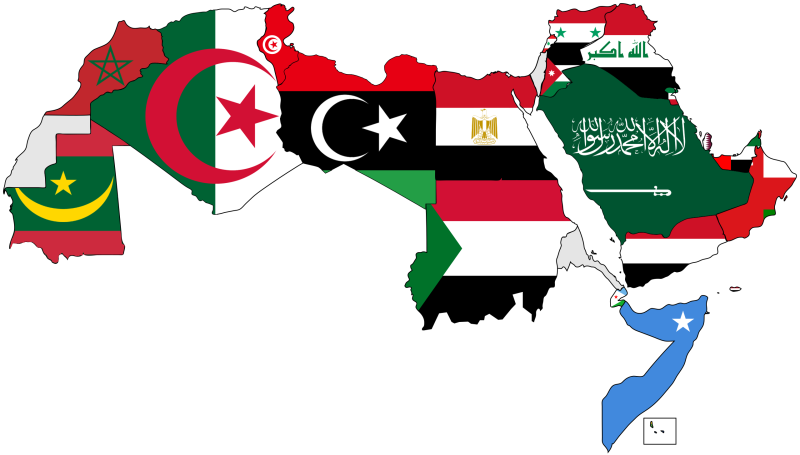Arabic, one of the world’s most widely spoken languages, is a linguistic treasure trove with a rich tapestry of dialects and forms. From the classical language of the Qur’an to the vibrant regional dialects spoken across the Arab world, Arabic reflects the cultural, historical, and geographical diversity of its speakers. In this guide, we’ll explore the primary types of Arabic, their geographical distribution, and their unique characteristics.
The Three Main Forms of Arabic
Arabic can be broadly categorized into three main forms, each serving distinct purposes:
1. Classical Arabic
- Usage: The language of the Qur’an, Islamic texts, and religious scholarship.
- Characteristics: Preserved in its ancient form, Classical Arabic is used primarily in religious contexts and is studied by Muslim scholars worldwide.
- Importance: It serves as the foundation for all other forms of Arabic.
2. Modern Standard Arabic (MSA)
- Usage: Formal writing, literature, news broadcasts, political speeches, and education.
- Characteristics: A modernized version of Classical Arabic, MSA is taught in schools and understood by Arabic speakers across all regions.
- Importance: It acts as a unifying language for formal communication in the Arab world.
3. Colloquial or Dialectal Arabic
- Usage: Everyday communication, varying significantly by region.
- Characteristics: These dialects are influenced by local cultures, histories, and languages, resulting in distinct variations.
- Importance: They represent the living, dynamic nature of Arabic as spoken in daily life.
Major Arabic Dialects and Their Regions
The Arab world is home to a wide array of dialects, each with its own unique flavor. Here are some of the most prominent Arabic dialects and the regions where they are spoken:
1. Egyptian Arabic
- Region: Egypt.
- Features: Widely understood across the Arab world due to Egypt’s influential media industry.
- Example: The Egyptian dialect is often used in movies, TV shows, and music.
2. Levantine Arabic
- Region: Syria, Lebanon, Jordan, and Palestine.
- Features: Known for its soft pronunciation and melodic tone.
- Example: Commonly used in Levantine soap operas and songs.
3. Gulf (Khaleeji) Arabic
- Region: Kuwait, Bahrain, Qatar, the UAE, Oman, and Saudi Arabia.
- Features: Characterized by its distinct vocabulary and pronunciation.
- Example: Often heard in Gulf-based news channels and cultural programs.
4. Maghrebi Arabic
- Region: Morocco, Algeria, Tunisia, and Libya.
- Features: Heavily influenced by French, Berber, and Spanish due to historical ties.
- Example: The Moroccan dialect, known as Darija, is particularly unique.
5. Mesopotamian (Iraqi) Arabic
- Region: Iraq, eastern Syria, and western Iran.
- Features: Retains many features of Classical Arabic.
- Example: Known for its rich poetic tradition.
6. Sudanese Arabic
- Region: Sudan and South Sudan.
- Features: Influenced by local African languages.
- Example: Often used in Sudanese music and folklore.
7. Yemeni Arabic
- Region: Yemen and southern Saudi Arabia.
- Features: Known for its archaic elements and unique vocabulary.
- Example: Used in traditional Yemeni poetry and storytelling.
Lesser-Known Arabic Dialects and Creoles
Beyond the major dialects, Arabic has also given rise to lesser-known varieties and creoles, reflecting the language’s adaptability and influence:
1. Hassānīya Arabic
- Region: Mauritania, Western Sahara, and parts of Mali and Niger.
- Features: Strong Bedouin influences and borrowings from Berber and French.
2. Chadian Arabic (Shuwa Arabic)
- Region: Chad, Sudan, Niger, Nigeria, and Cameroon.
- Features: A distinct dialect influenced by local African languages.
3. Judeo-Arabic
- Region: Historically spoken by Jewish communities in the Middle East and North Africa.
- Features: Written in the Hebrew alphabet and now mostly extinct.
4. Maltese
- Region: Malta.
- Features: A separate language descended from Siculo-Arabic, with heavy Italian and English influences.
5. Andalusi Arabic
- Region: Once spoken in Spain and Portugal during the Moorish rule.
- Features: Extinct but left a lasting impact on the Spanish language.
The Influence of Arabic on Other Languages
Arabic’s influence extends far beyond the Arab world. Many languages, including Spanish, English, and Persian, have borrowed words from Arabic. For example:
- Spanish: Words like “algodón” (cotton) and “almohada” (pillow) have Arabic origins.
- English: Terms like “sugar,” “coffee,” and “algebra” trace their roots to Arabic.
Conclusion: Celebrating the Diversity of Arabic Dialects
The Arabic dialects are a testament to the rich cultural and historical tapestry of the Arab world. From the formal elegance of Modern Standard Arabic to the vibrant regional dialects, Arabic continues to evolve and adapt, reflecting the dynamic nature of its speakers.
Understanding these dialects is not only essential for language learners but also for anyone seeking to engage with Arabic-speaking communities, whether for business, travel, or cultural exchange. By appreciating the diversity of Arabic dialects, we gain a deeper understanding of the Arab world’s heritage and its enduring linguistic legacy.
Last modified: 12 February 2025






